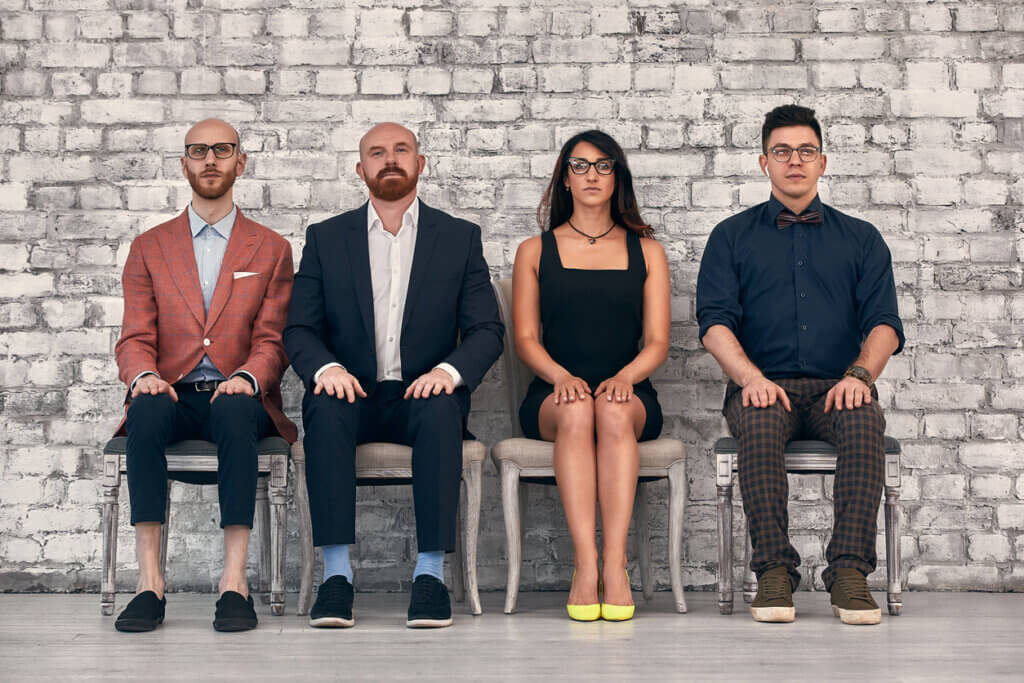Summary: By elevating temporary disabilities, you may quickly lose the plot of the disability experience. Instead of getting excited about temporary disabilities, focus on doing a better job at addressing the so-called ‘permanent’ disability experience. Do this by appreciating and understanding lived experiences. That is the actual details and barriers to living with a disability. Use that knowledge to innovate.
Microsoft, what did you do?
Five years ago, when I first cracked open Microsoft’s Inclusive Design toolkit (now called the Inclusive Design 101 guidebook), I was excited. When I saw the ”new market” in which “temporary disability” extends how we think about disability, I thought, “Oh, this is to comfort people not comfortable with a disability.” Okay, fine. Then I saw how the message spread to UX info-churn shops like IxDF, who loved it, like many others in the industry– it gave them comfort. They were less comfortable with the balanced view you’ll read about below. This post explains why you can balance your comfort with some healthy discomfort. ☺️
What the model says: Microsoft’s Inclusive Design framework has been widely praised for its focus on designing for people with disabilities by emphasizing three categories: permanent, temporary, and situational disabilities. For example, while a permanent disability might involve the loss of a limb, a temporary disability could include a broken arm, and a situational disability could involve carrying groceries while using a smartphone. The framework encourages designers to think broadly about accessibility by recognizing that everyone can face barriers in certain contexts.

In the diagram, if you examine “See” you get blind, cataracts, and distracted drivers across the spectrum. Notice that there’s a big difference in access barriers between living with blindness and being distracted while driving. There’s simply no comparison. In other words, don’t pretend you can understand the blind experience because you can get distracted while driving, and therefore you ‘get it’.
Clarification: This model was created in 2015 during Kat Holmes’s tenure. Kat is the author of Mismatch and former Principal Design Director, Inclusive Design at Microsoft. To Kat’s credit, it’s clearly described in her book. The persona spectrum is a way to ‘design for one and extend to many’. The “one” in that equation is the person with the ‘permanent’ disability. The ‘extend to many’ is the idea that if you make something accessible, it has knock-on positive benefits for everyone.
It’s that last part that’s been problematic. This is especially the case with the recycling of this now Temporary/ Situation/ Permanent meme-like explanation of disability. It’s time to update, clarify and pivot out of this meme folks.
What’s the problem?
The Temporary/ Situation/ Permanent distinction includes diagrams, numbers, dollar projections, etc. It’s a market forecast of sorts. But it also offers a way for people to take their discomfort with disability and abstract it. That’s like me saying I know what low vision or blindness is because I rely on contact lenses or glasses to see. I don’t know. I have never known what barriers block access to things like financial services, participating in employment, or accessing government resources for low vision or blind users.
While the spectrum model serves a purpose, relying heavily on temporary disabilities to inform design risks missing the complexities of lived experiences for people with permanent disabilities. Worse, it can lead to a shallow understanding, undermining your ability to do disability advocacy. This can negatively affect your ability to benefit from ‘inclusion innovation‘.
Let’s explore why temporary disabilities fall short and how they might weaken your ability to advocate effectively for people with disabilities. This matters if you’re trying to improve accessibility.
Temporary disabilities lack depth
Temporary experiences might seem insightful at first glance, such as wearing noise-canceling headphones to simulate hearing loss or taping fingers to simulate limited dexterity. These exercises can offer a surface-level understanding of barriers, but they fail to capture the depth and nuance of living with a permanent disability. Research shows that disability simulators (e.g. male designers wearing a pregnancy vest to simulate the experience) don’t work. Similarly, the temporary disabilities framing also doesn’t work.
I recently asked a colleague around the office hobbling on crutches from a ski accident. “What’s it like having this mobility challenge with that crutches? Do you feel you understand what it’s like to have a disability?”. Her answer “Absolutely not!”.
There is often an underlying assumption of eventual recovery for someone with a temporary condition. This creates a fundamentally different mindset than someone who navigates systemic barriers daily, often without the promise of resolution. Lived experience encompasses emotional, cultural, and societal factors that temporary simulations cannot replicate.
Example: Chronic vs. Acute conditions
Consider chronic pain compared to an injury that temporarily restricts movement. A designer might simulate limited mobility with a splint, but this doesn’t convey the mental fatigue, anxiety, or social stigma often faced by people with chronic conditions. Designing without considering these factors risks creating solutions that address symptoms but ignore the broader context of a person’s life.
Reinforcing stereotypes + performative allyship
Using temporary disabilities as proxies for permanent ones can inadvertently reinforce stereotypes. Designers may come away with oversimplified understandings, assuming that accommodations only need to solve “functional” issues. This narrow focus ignores the social and systemic barriers people with disabilities face daily, such as employment discrimination, inaccessible public spaces, and bias in healthcare.
Overemphasizing temporary disabilities can lead to performative allyship rather than meaningful design decisions that elevate the quality of accessibility. When designers rely on their brief experiences to “speak for” people with disabilities, they risk sidelining the voices of those with lived experience. Advocacy rooted in shallow understanding can result in solutions that appear inclusive but fail to address real needs.
This is why it’s critical to involve users with disabilities. For example, Accessibility testing with users with disabilities.
Lived Experience as the gold standard
Lived experience must be prioritised when designing truly inclusive products. Engaging directly with people who have disabilities ensures that solutions address genuine needs rather than hypothetical scenarios. Co-design, where people with disabilities collaborate throughout the design process, is essential for creating meaningful change.
Practical Steps for Researchers, Devs and Designers:
-
Partner with Advocacy Groups: Build relationships with disability organizations to ensure diverse perspectives are represented.
-
Embed Accessibility Testing: Regularly test designs with people who have disabilities to uncover real-world challenges.
-
Invest in Long-Term Relationships: Go beyond one-off consultations and involve people with disabilities throughout the lifecycle of a project. Start by expanding your view of accessibility from a compliance drill to understanding the problem space for people with disabilities: Conduct Ethnographic interviews with people with disabilities
Bottom line: Microsoft’s Inclusive Design framework sparked important conversations about accessibility, but temporary disabilities can never fully approximate the lived experiences of people with permanent disabilities.
To design truly inclusive solutions, lived experience must be at the center of the process. This means collaborating with people with disabilities, investing in long-term relationships, and addressing systemic barriers. By moving beyond temporary proxies, designers can create products and services that empower all users and drive meaningful accessibility initiatives.
Learn more: More UX Impact with Inclusive Design (FREE Masterclass)










